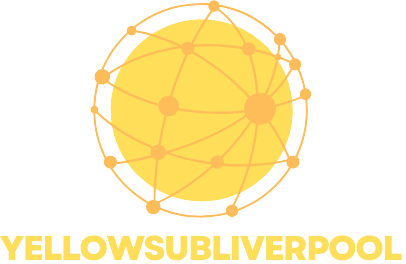Table of Contents
ToggleIn today’s fast-paced world, digital workplace tools aren’t just nice to have—they’re a necessity. Imagine a place where collaboration flows as smoothly as your morning coffee and deadlines are met without the usual chaos. That’s the magic of these tools. They transform mundane tasks into streamlined processes, making work feel less like a slog and more like a well-choreographed dance.
But wait, there’s more! With the right digital tools, teams can communicate better, share files faster, and even manage projects with the grace of a ballet dancer (minus the tights). Whether you’re a solo entrepreneur or part of a bustling corporation, these tools can elevate productivity and enhance teamwork. So buckle up, because diving into the world of digital workplace tools could be the best decision you make for your career.
Overview of Digital Workplace Tools
Digital workplace tools encompass software and applications designed to facilitate communication, collaboration, and organization in a professional setting. These tools significantly impact how individuals and teams interact, leading to enhanced efficiency and productivity.
Collaboration platforms like Slack and Microsoft Teams serve as centralized hubs for messaging and file sharing. Teams utilize these tools to streamline discussions and streamline project workflows. Integrating project management software such as Trello or Asana helps track milestones and deadlines effectively.
Cloud storage solutions, including Google Drive and Dropbox, provide secure environments for file sharing and accessibility. Employees can easily store and retrieve important documents from anywhere, ensuring seamless transitions between remote and in-office work. These platforms often include features that promote real-time editing, further supporting teamwork.
Time management applications like Todoist and Clockify assist individuals in organizing their tasks and tracking their productivity. These tools help prioritize assignments, reducing the likelihood of missed deadlines and improving overall task accuracy.
The adoption of digital workplace tools leads to measurable improvements in organizational communication. Research indicates that companies using these tools report increased employee engagement and satisfaction. Such enhancements directly contribute to stronger teamwork and accelerated project completion.
Remote work trends have highlighted the necessity of these tools for successful operations. Organizations investing in digital workplace technologies outperform competitors lacking similar resources. As remote work continues to shape industry standards, the relevance of digital workplace tools becomes increasingly pronounced.
Key Features of Digital Workplace Tools

Digital workplace tools offer a range of features that enhance efficiency and collaboration in various environments. These tools not only streamline workflows but also foster improved engagement among team members.
Collaboration Features
Collaboration features stand at the forefront of digital workplace tools. Centralized platforms enable users to share files and work together in real-time. Tools like Slack and Microsoft Teams allow for seamless messaging and notifications, ensuring team members remain connected. Shared documents in cloud storage solutions—like Google Drive—facilitate simultaneous editing, allowing for immediate updates. Version control features prevent confusion, ensuring everyone accesses the latest information. These collaboration capabilities drive productivity and create a more cohesive team environment.
Communication Tools
Communication tools are essential for maintaining clarity and connectivity among team members. Instant messaging systems provide a quick way to discuss ideas, ask questions, and resolve issues. Video conferencing tools, such as Zoom, facilitate face-to-face interactions, regardless of location. Integrating email tools with collaboration platforms ensures efficient communication across different channels. Notifications keep team members informed about important updates, reducing the chances of miscommunication. Such features enhance overall organizational synergy, leading to stronger work relationships.
Project Management
Project management tools provide a structured approach to tracking tasks and deadlines. Platforms like Trello and Asana help teams break down projects into manageable steps, allowing for clear visibility into progress. Each task can have assigned responsibilities, due dates, and detailed descriptions, ensuring accountability. Gantt charts visualize project timelines, letting teams adjust to shifting priorities efficiently. Integration with other tools enhances functionality, promoting a holistic view of project performance. These project management capabilities lead to increased efficiency and goal alignment across organizations.
Popular Digital Workplace Tools
Digital workplace tools significantly enhance collaboration and efficiency. These tools serve various functions, streamlining processes across teams and organizations.
Tool 1: Overview and Benefits
Slack operates as a messaging platform where teams can communicate in channels or direct messages. This tool facilitates real-time discussions, making information easily accessible. Integrating file sharing enhances collaboration, allowing team members to work together efficiently on projects. With customizable notifications, users can prioritize alerts, ensuring they don’t miss essential updates. Research shows organizations using Slack experience increased communication efficiency, fostering enhanced employee engagement.
Tool 2: Overview and Benefits
Trello provides a visual approach to project management through boards, lists, and cards. This format allows team members to track tasks and deadlines effectively. Viewing projects at a glance enhances accountability and transparency, as everyone can see their contributions. Trello’s integration with various applications promotes a seamless workflow, optimizing task coordination. Users report improved task completion rates, emphasizing greater productivity.
Tool 3: Overview and Benefits
Google Drive functions as a cloud storage solution that enables secure file sharing and collaboration. Multiple users can edit documents simultaneously, fostering real-time contributions and feedback. Data integrity remains intact with version control, allowing easy recovery of previous document states. Accessibility from any device enhances flexibility, crucial for remote work. Organizations utilizing Google Drive often see smoother transitions between in-office and remote operations, increasing overall efficiency.
Advantages of Using Digital Workplace Tools
Digital workplace tools streamline collaboration, enhancing overall productivity. Increased communication efficiency has measurable benefits, with surveys showing higher employee engagement and satisfaction among organizations using these tools. Organizations experience transformed workflows as teams can share files and ideas in real-time, promoting a cohesive work environment.
Project management capabilities in these tools help maintain organization and accountability. Tasks become easier to track with visual aids like boards and lists, ensuring deadlines don’t get overlooked. As a result, productivity levels rise, leading to timely project completions.
Cloud storage solutions improve accessibility by enabling secure file sharing from anywhere. Remote teams thrive when they can edit documents concurrently, eliminating bottlenecks and delays. Flexibility becomes a cornerstone of modern work culture.
Additionally, the integration of communication tools allows for seamless connectivity. Instant messaging and video calls become the norm, facilitating quick updates and discussions. This constant communication link ensures that team members stay informed and aligned.
Time management apps contribute significantly to personal productivity. Features that track progress and deadlines allow individuals to plan their schedules effectively. Improved task accuracy reduces the stress of missed deadlines, fostering a more organized work approach.
Employers benefit from investing in digital workplace tools, as they often outperform competitors who do not adopt these technologies. Organizations that prioritize these tools see enhanced collaborative efforts and improved work relationships, ultimately contributing to a stronger workplace culture.
Digital workplace tools are no longer optional; they’re essential for thriving in today’s work environment. By adopting these technologies, organizations can significantly enhance collaboration and streamline processes. The right tools not only improve communication but also foster a culture of engagement and satisfaction among employees.
As remote work becomes the norm, leveraging tools like Slack, Trello, and Google Drive can lead to remarkable improvements in productivity and teamwork. Investing in these solutions positions organizations to outperform competitors and adapt to changing work dynamics. Embracing digital workplace tools is a strategic move that can transform challenges into opportunities for growth and success.







